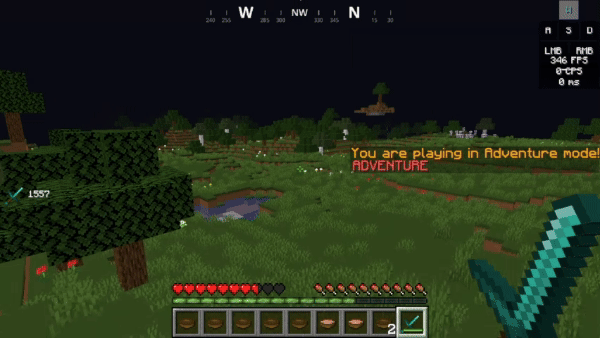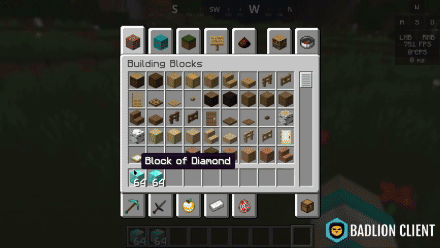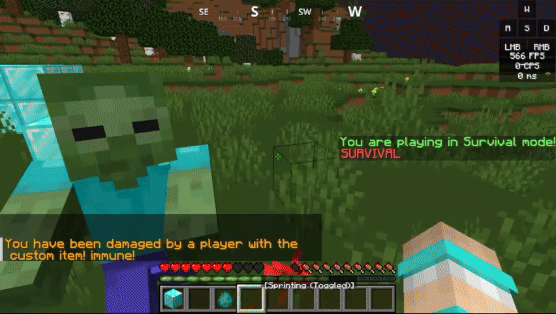Bukkit Item
Wanted to make items with custom behaviours? This module is for you!
Adding the Bukkit Item module
In your module build.gradle, please add the following dependency:
- Groovy
- Kotlin DSL
dependencies {
api 'io.fairyproject:bukkit-items'
// Other dependencies
}
dependencies {
api("io.fairyproject:bukkit-items")
// Other dependencies
}
FairyItem
FairyItem is a class that represents an item in the game, creating a FairyItem is like registering a custom item into registry.
Whenever you want it in ItemStack form, it has the functionality to convert it into an ItemStack.
The item that's provided by the FairyItem will be marked as a custom item using NBT tags.
So as long as the FairyItem ID is the same and properly registered, the item will keep its function even after the server restarts.
Creating a FairyItem
import io.fairyproject.bukkit.item.FairyItem;
@InjectableComponent
public class MyComponent {
private final FairyItemRegistry fairyItemRegistry;
private FairyItem customItem;
public void createItem() {
this.customItem = FairyItem.builder("my_custom_item")
.item(new ItemStack(Material.DIAMOND_SWORD))
.create(fairyItemRegistry);
}
public void useItem(Player player) {
ItemStack itemStack = customItem.provide(player);
player.getInventory().addItem(itemStack);
}
}
Do NOT create an instance of FairyItem everytime you want to use it, instead create a static instance of it and use it.
Or you can use the FairyItemRegistry to get the instance of the item.
public void useItem(Player player) {
ItemStack itemStack = fairyItemRegistry.get("my_custom_item").provideItemStack(player);
player.getInventory().addItem(itemStack);
}
And tada! You have created a custom item in the game. But wait... how is it different from a normal ItemStack?
Well, the FairyItem has a lot of functionalities that you can use to interact with the item!
Behaviours
Behaviours are the functionalities that you can add to the item, such as right-clicking, left-clicking, blo, or just register your own custom behaviour to the item!
Right Click
Let's start with a simple right-click behaviour!
@InjectableComponent
public class MyComponent {
private final FairyItemRegistry fairyItemRegistry;
// New dependency for the interaction behaviour!
private final ListenerRegistry listenerRegistry;
private FairyItem customItem;
public void createItem() {
this.customItem = FairyItem.builder("my_custom_item")
.item(new ItemStack(Material.DIAMOND_SWORD))
.behaviour(ItemBehaviour.interact(listenerRegistry, (player, itemStack, action, event) -> {
player.sendMessage("You right-clicked the item!");
}, Action.RIGHT_CLICK_AIR, Action.RIGHT_CLICK_BLOCK))
.create(fairyItemRegistry);
}
}

Easy and simple right? You can also add more behaviours to the item, such as left-click, block-place, or even custom behaviours!
Let's see more examples of behaviours!
Block Place
@PostInitialize
public void createItem() {
this.customItem = FairyItem.builder("my_custom_item")
// You can also slap in item builder here!
.item(ItemBuilder.of(Material.DIAMOND_BLOCK)
.name("&6&lBIG DIAMOND BLOCK")
.lore("&7This is a big diamond block!", "&7Right click to place a 3x3 diamond block")
)
/**
* Place a 3x3 diamond block when block placed
*/
.behaviour(ItemBehaviour.blockPlace(listenerRegistry, (player, itemStack, block, event) -> {
for (int x = -1; x <= 1; x++) {
for (int y = -1; y <= 1; y++) {
for (int z = -1; z <= 1; z++) {
Block around = block.getWorld().getBlockAt(block.getX() + x, block.getY() + y, block.getZ() + z);
around.setType(Material.DIAMOND_BLOCK);
}
}
}
}))
.create(fairyItemRegistry);
}

Hella cool! you should've also noticed in the gif, it's not checking by item type, but NBT instead, so no worries about how it's being used!
Custom Events
Now here comes, custom events! Let's say... Whenever I was damaged by other entities, if I held this item, I should be immune to the damage!
public void createItem() {
this.customItem = FairyItem.builder("my_custom_item")
.item(ItemBuilder.of(Material.DIAMOND_BLOCK)
.name("&6&lYou are immune!")
.lore("&7This item makes you immune to entity damage!")
)
.behaviour(ItemBehaviour.ofEvent(PlayerDamageByEntityEvent.class, (event, behaviour) -> {
Player player = event.getPlayer();
ItemStack itemStack = player.getInventory().getItemInMainHand();
// Check if the player is holding the custom item
if (behaviour.matches(player, itemStack)) {
player.sendMessage(CC.GOLD + "You have been damaged by a player with the custom item! immune!");
event.setCancelled(true);
}
}))
.create(fairyItemRegistry);
}

Very easy! right?
Metadata
You can also add metadata to the item, so for example, if you want to do some detection if it's kit item, you can use metadata directly.
/**
* The dependency to identify the item as a FairyItem
*/
private final FairyItemIdentifier fairyItemIdentifier;
private final FairyItemRegistry fairyItemRegistry;
private final MetadataKey<Boolean> KIT_KEY = MetadataKey.create("kit_key", Boolean.class);
public void createItem() {
FairyItem.builder("my_custom_item")
.item(ItemBuilder.of(Material.DIAMOND_BLOCK))
.put(KIT_KEY, true)
.create(fairyItemRegistry);
FairyItem.builder("my_custom_item_2")
.item(ItemBuilder.of(Material.DIAMOND_BLOCK))
.put(KIT_KEY, true)
.create(fairyItemRegistry);
}
public boolean isKitItem(ItemStack itemStack) {
FairyItem fairyItem = fairyItemIdentifier.get(itemStack);
if (fairyItem != null && fairyItem.getMetadataMap().has(KIT_KEY)) {
// It will return true if it's my_custom_item or my_custom_item_2 since it has the KIT_KEY
return true;
}
return false;
}